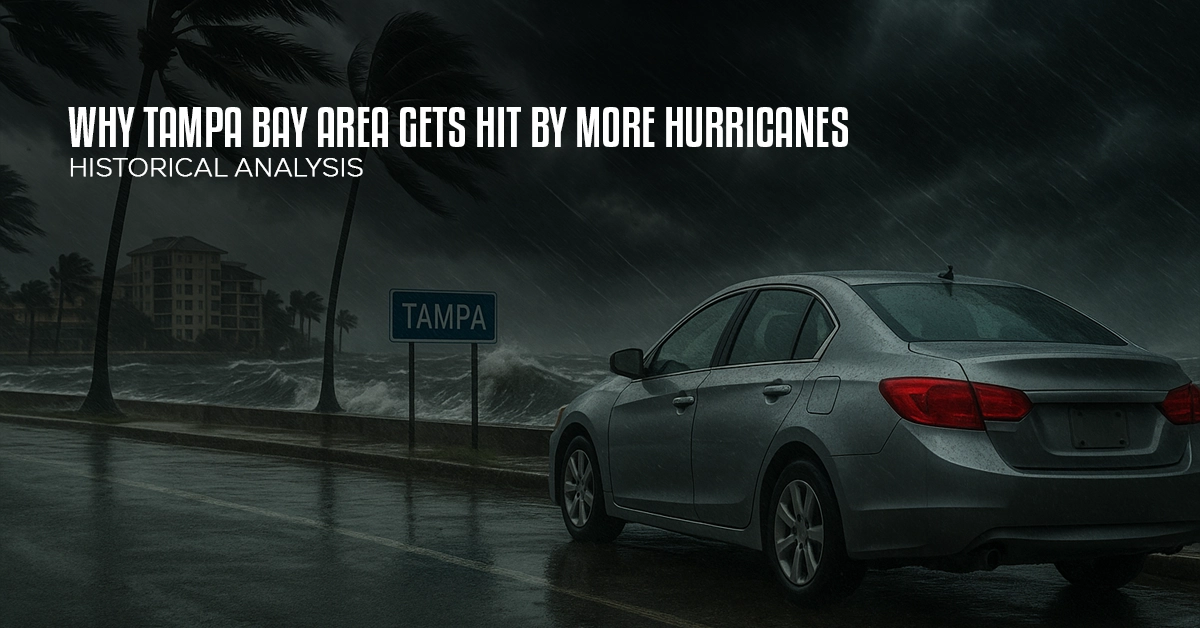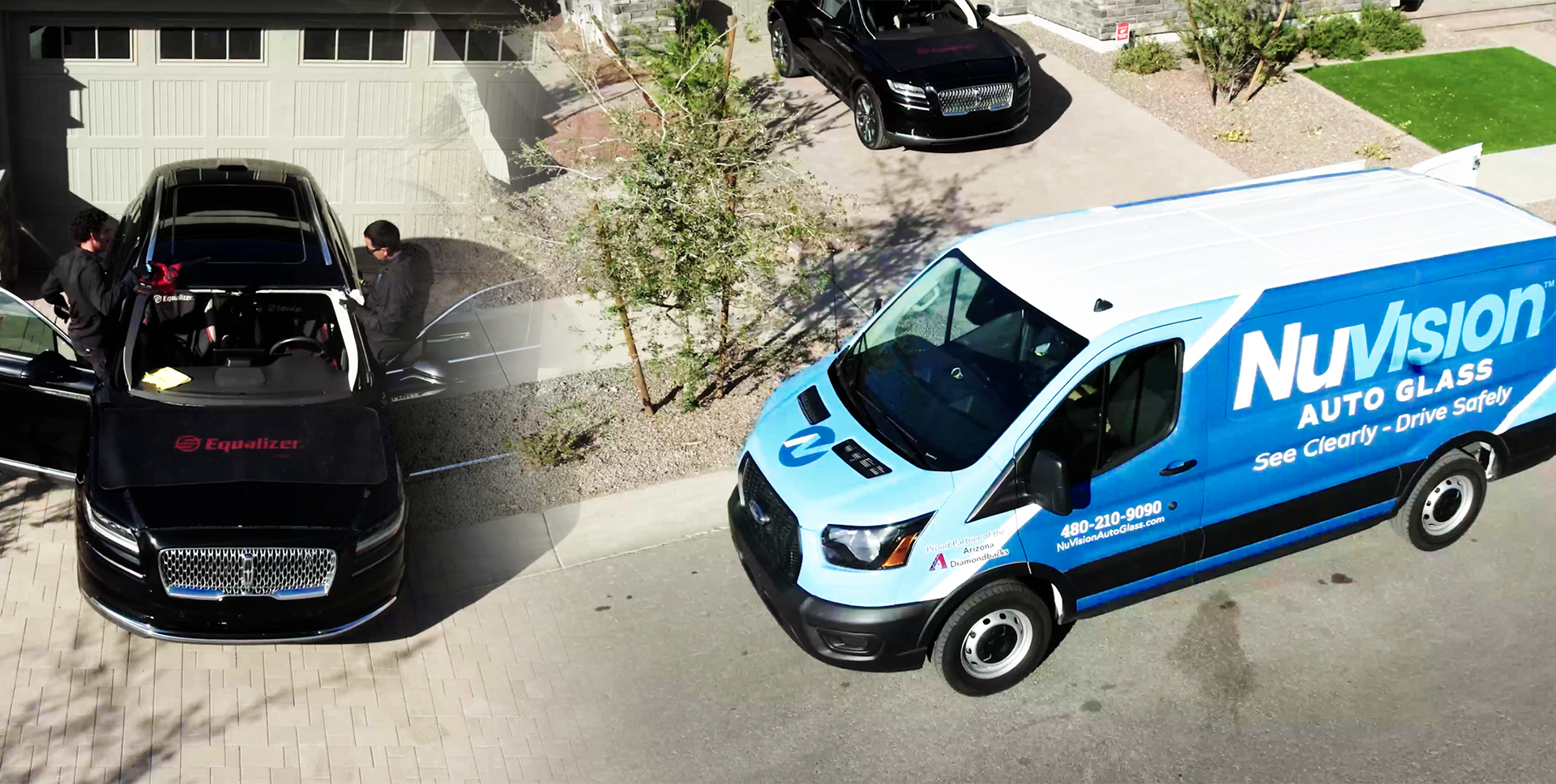Why Tampa Bay Area Gets Hit by More Hurricanes – Historical Analysis

Florida is no stranger to hurricane season, but if you live in or around the Tampa Bay area, you’ve probably noticed that this region seems to catch more than its fair share of storms. Why is that? Is it just bad luck, or is there something more to it?
Let’s dive into the historical data, climate science, and geography that explain why hurricanes seem to have Tampa Bay in their sights, and more importantly, what residents can do to prepare, including how to protect their home and vehicle from storm-related damage.
Understanding Tampa Bay’s Hurricane History
The Tampa Bay area, which includes Tampa, St. Petersburg, Clearwater, and surrounding communities, has a complex relationship with hurricanes. While the region hasn’t seen a direct hit from a major hurricane since the 1921 Tarpon Springs storm, it remains one of the most at-risk coastal metro areas in the U.S.
Historical Patterns
Here’s a quick look at some of the significant storms that have impacted the Tampa Bay area:
- 1921 Tarpon Springs Hurricane (Category 3): The last direct hit, which caused major flooding and extensive property damage.
- Hurricane Elena (1985): Although it didn’t make landfall, Elena hovered offshore for days, leading to evacuations, beach erosion, and infrastructure damage.
- Hurricane Irma (2017): Though weakened by the time it reached Tampa Bay, Irma caused widespread wind damage and flooding.
- Hurricane Idalia (2023): While it skirted to the north, storm surge and heavy rainfall still hit the bay hard.
The fact that Tampa has avoided a direct Category 4 or 5 impact in recent years doesn’t mean it’s safe, quite the opposite. Experts agree the region is overdue for a major storm, and its geography makes it especially vulnerable.
Why Tampa Bay Is at Higher Risk for Hurricanes
1. Geographical Funnel Effect
Tampa Bay’s coastline curves inward, forming a natural funnel. When hurricanes approach from the south or southwest, this shape traps storm surge and channels it directly into the bay. This can amplify flooding, especially in low-lying areas like Clearwater Beach, Davis Islands, and South Tampa.
2. Warm Gulf Waters Fuel Intensity
The Gulf of Mexico, especially during late summer, often sees water temperatures above 85°F. This warm water acts as fuel for hurricanes, giving storms a chance to rapidly intensify before landfall, sometimes within hours.
3. Low Elevation and Dense Development
Much of Tampa Bay sits at or near sea level. Combine that with dense urban development and aging infrastructure, and you’ve got a recipe for serious storm surge and flood risk.
4. Climate Change and Rising Sea Levels
With sea levels rising and hurricanes becoming stronger due to global warming, even a glancing blow can be catastrophic. A NOAA study recently ranked Tampa Bay among the top 10 U.S. metros at risk of billion-dollar hurricane impacts.
How Hurricanes Impact Vehicles and Auto Glass
Most people think about boarding up windows and stocking up on supplies when a hurricane approaches, but vehicles are often overlooked. Yet they’re highly vulnerable during a storm.
Common Auto Glass Damage from Hurricanes:
- Flying Debris: Roof tiles, branches, signs, and even streetlight covers can be lifted by high winds and smash into windshields.
- Falling Trees: Tampa’s tree-lined streets are beautiful, until high winds bring branches crashing down.
- Hail and Pressure Changes: Hailstorms and rapid shifts in air pressure can cause chips to spread into full-blown cracks.
If you drive a newer vehicle with ADAS features (like lane assist or forward collision warning), windshield replacement after a storm isn’t just about swapping glass, it often requires ADAS calibration to ensure safety systems work properly again.
Preparing for Hurricane Season in Tampa Bay
While you can’t control the weather, you can control how well you prepare. Here are some key steps to protect your home and vehicle:
Secure Your Vehicle
- Park Indoors or in Covered Spaces: If you have a garage, use it. If not, avoid parking near trees or power lines.
- Use a Car Cover: Heavy-duty car covers can help reduce minor glass damage from flying debris.
- Inspect Glass Before and After a Storm: Even a small chip can become a safety risk during strong winds.
Be Storm-Ready
- Keep Insurance Updated: Make sure your policy includes comprehensive coverage for windshield damage.
- Know Your Providers: Companies like NuVision Auto Glass offer same-day service and mobile repair options across the Tampa Bay area, so you’re not stranded if damage occurs.
Why Choose NuVision Auto Glass After a Storm?
At NuVision Auto Glass, we specialize in windshield replacement in Tampa and the greater Florida region, with added expertise in ADAS calibration. Our certified technicians can come to your home or workplace, often within the same day.
Here’s why Tampa Bay residents trust NuVision:
- Mobile Service Across Hillsborough and Pinellas Counties
- OEM-Grade Glass with Lifetime Workmanship Warranty
- Insurance-Backed Repairs with $0 Out-of-Pocket Costs
- ADAS Calibration for 2021+ Vehicles
- Fast Claim Assistance and Hassle-Free Scheduling
Whether your windshield was chipped during Hurricane Idalia or cracked from flying debris during an afternoon thunderstorm, we’ve got you covered.
Final Thoughts
The Tampa Bay area’s beauty comes with a cost, a higher-than-average risk of hurricanes and storm-related damage. But by understanding the risks and preparing accordingly, you can minimize damage to your property and your vehicle.
If your windshield takes a hit this hurricane season, NuVision Auto Glass is here to help, with quick, reliable, and insured service you can trust.
FAQs on Why Tampa Bay Area Gets Hit by More Hurricanes
1. Has Tampa ever been directly hit by a major hurricane?
Yes, the last direct hit was in 1921 from a Category 3 storm. While rare, the threat remains very real due to the region’s geography and climate trends.
2. Can hurricanes really break my windshield?
Absolutely. High winds often hurl debris at your car, which can crack or completely shatter your auto glass.
3. Is windshield replacement covered by insurance after a storm?
If you have comprehensive coverage, most Florida drivers pay $0 out of pocket for repairs or replacement. NuVision Auto Glass helps handle the claims process for you.
4. What should I do if my windshield is cracked after a storm?
Contact a professional immediately. Even a small crack can weaken the structure of your windshield. NuVision offers same-day mobile repair across Tampa Bay.
5. Do I need ADAS calibration after windshield replacement?
If your vehicle has modern driver-assistance features, then yes. Calibration is essential to keep your safety systems working properly, and NuVision handles that, too.

